When it comes to optimizing our sleep and ensuring a rejuvenating slumber, we are constantly seeking innovative solutions.
One such groundbreaking approach gaining popularity is the use of red light therapy. As science delves deeper into the ways light affects our circadian rhythm and overall well-being, red light therapy has emerged as a promising technique to promote quality sleep.
But how does it work, and can it really help with insomnia and other sleep disorders? In this article, we will explore the fascinating world of red light therapy and its potential benefits for achieving a blissful night's sleep.

Red Light Support Your Sleep-Wake Cycle
Falling asleep is a lot easier when your body clock gets a clear “nighttime” signal. Gentle red light can help send that signal without the jolt that bright, blue-heavy light gives your brain.
- Red light is easy on your body clock. Unlike bright white or blue light, dim red light does not strongly suppress melatonin, the hormone that helps you feel sleepy at night.
- An evening red-light session can become a wind-down cue. Sitting near a red-light device for a short, calm session in the hour before bed tells your brain it’s time to slow down.
- Keeping the rest of your lighting low makes the effect stronger. Turn off overheads, switch screens to night settings, or put them away so the red light isn’t competing with glare.
- Consistency helps your rhythm settle. Using red light at roughly the same time each night trains your body to expect sleep, which can make it easier to fall asleep and wake up refreshed.
- It’s a simple add-on to good sleep habits. Pair red light with a steady bedtime, a cool dark room, and limited caffeine late in the day for the best results.
Used this way, red light becomes a calm, nightly signal that supports a more natural sleep pattern and a smoother path to rest.
Red Light Help With Sleep Problems
Sleep issues rarely have a single cause. Red light will not cure a medical condition on its own, but used the right way it can be a gentle, drug-free tool that supports better nights.
- For trouble falling asleep (occasional insomnia): A 10–30 minute, dim red-light session in the hour before bed can act as a wind-down cue. Pair it with simple breathing, a warm shower, and a no-screens rule so your brain gets a clear “nighttime” signal.
- For a “night-owl” body clock (delayed schedule): Use red light as you taper other lights in the evening, then keep your bedtime and wake time consistent. In the morning, get bright natural light to anchor the new rhythm.
- For jet lag after travel: On the first two or three local evenings, sit near a red-light device while you unwind and avoid bright overheads. The next morning, seek daylight outdoors to help shift your internal clock.
- For shift-work transitions: After a night shift, keep lights low, use red light during your wind-down, and wear dark glasses on the commute home. Make your bedroom dark and cool so daytime sleep comes easier.
- For middle-of-the-night wake-ups: If you need a bathroom trip or to check on a child, use a small red night light instead of switching on bright white lights. This helps you get back to sleep faster.
- For stress-filled evenings: Treat red-light time like a mini routine—read a paper book, stretch lightly, or journal for a few minutes. The calm, low-glare glow helps your brain shift out of “go mode.”
- What it does and doesn’t do: Red and near-infrared light are easy on melatonin and may support relaxation and sleep quality when used consistently. They are not a stand-alone treatment for conditions like sleep apnea; snoring, choking, or heavy daytime sleepiness deserve a medical evaluation.
Keep the light dim and indirect, avoid staring into the LEDs, and try nightly use for two weeks before judging results. Combine it with solid basics—regular bed/wake times, a cool dark room, and limited late caffeine—for the best effect.
Used as part of a simple bedtime routine, red light becomes a steady signal that it is time to slow down, helping many people fall asleep more smoothly and wake up feeling more restored.

Red Light Therapy Improves Relaxation and Mood at Night
Feeling calm before bed makes drifting off much easier. Red light therapy offers a soft, low-glare glow that helps your brain shift from “go” to “rest” without the alerting punch of bright, blue-heavy light.
Real-life ways to use it (with specific steps):
- A 15-minute wind-down you can repeat nightly. Sit an arm’s length from the device, angled slightly off to the side. Keep room lights low, breathe slowly (try 4-7-8), and read a paper book or jot tomorrow’s to-dos.
- A calmer bathroom trip at 2 a.m. Plug a small red night light in the hall and bathroom. Use only that light and head straight back to bed to keep your brain in “sleep” mode.
- A no-screen cool-down after a long day. Turn off TVs and phones 30–60 minutes before bed. Switch on your red light, stretch gently, and listen to quiet music with the screen face-down.
- A parent’s quick reset. For late feeds or check-ins, use a dim red lamp instead of bright ceiling lights. The softer glow settles everyone and makes returning to sleep easier.
- A roommate-friendly study finish. Place a red bulb or LED strip near your desk or headboard. When it turns on, tidy up, pack your bag, and start your bedtime routine without waking others.
- A shift-worker cool-down. After a night shift, keep lights low, run a 10–20 minute red-light session, shower warm, then settle in a dark, cool room to help your body switch gears.
Mood-easing add-ons that pair well with red light therapy:
- These small extras deepen the calming effect of red light therapy without adding complexity or cost.Play slow-tempo music at a steady, low volume so your nervous system can downshift.
- Take a warm shower or bath first, then sit by the red light to dry and unwind.
- Do a short body scan or progressive muscle relaxation while the light is on.
- Diffuse a familiar, gentle scent, such as lavender, if scents tend to relax you.
Pick one or two that feel natural; consistency matters more than variety for steady nighttime calm.
Simple setup tips so it feels good, not glaring:
- A few placement tweaks turn harsh light into a cozy glow your eyes actually welcome nightly.Place the device 12–24 inches away and slightly off to the side; avoid direct staring.
- Keep brightness comfortable; you should feel soothed, not spotlighted or squinting.
- Use it for 10–30 minutes in the last hour before bed on most nights of the week.
- Treat it like a bedside lamp, not a task light, to keep the tone calm and restful.
If the light feels soothing and easy, you will keep using it nightly and benefit more.
Red Light Therapy Supports Hormone Balance for Better Sleep
Your sleep depends on a simple nightly shift: melatonin rises while cortisol eases down. Bright, blue-heavy light at night can scramble that shift. Red light therapy offers a gentler glow that supports your body’s natural rhythm instead of fighting it.
What “hormone balance” means at bedtime (in plain terms):
Melatonin is your body’s “sleep signal.” It should rise in the evening. Blue and bright white light can hold it down. Red light therapy gives you usable light without that strong melatonin-blocking effect, so your natural evening rise can unfold more smoothly. A practical evening routine that supports melatonin:
- Sit 12–24 inches from your red-light device, slightly off to the side, for 10–30 minutes in the last hour before bed.
- Keep the room dim. Turn off overheads, close bright apps, and set screens aside.
- Treat the light like a cozy lamp: indirect, comfortable, and never glaring into your eyes.
- Repeat at the same time each night so your brain learns the cue, “it’s time to wind down.”
- Optional but helpful: take a warm shower first, then read a paper book or journal while the light is on.
Morning steps that lock in the other half of the rhythm (cortisol/serotonin):
- Get outside light within an hour of waking for 5–15 minutes, even on cloudy days.
- Use regular room lighting or daylight in the morning; save red light therapy for evenings.
- Keep wake time consistent on weekdays and weekends to steady hormone timing.
Real-life playbooks for common situations:
- Jet lag or time-zone changes: Use red light therapy on local evenings for the first few days while keeping other lights low. The next mornings, get outdoor daylight to anchor the new schedule.
- Shift work: After a night shift, run a 10–20 minute red-light wind-down, wear dark glasses on the way home, and sleep in a dark, cool room with blackout curtains.
- Middle-of-the-night wake-ups: Use a small red night light for bathroom trips so melatonin stays on track and you can fall back asleep faster.
- Teens and late-night study: Switch the desk lamp to red in the last study block, then power down screens. This keeps the melatonin rise from getting blunted right before bed.
- Perimenopause or stress spikes: Pair a short red-light session with slow breathing or a brief stretch routine to reduce evening tension that can delay sleep.
Used consistently, red light therapy becomes a steady evening cue: lights soften, tension drops, and your natural sleep hormones can do their job—helping you settle faster and wake feeling more restored.
Creating a Sleep-Friendly Bedroom with Red Light Therapy
Blue-heavy light from phones and overhead fixtures can delay sleep by holding melatonin down, while red light therapy provides gentle, usable light that supports a calmer evening mood. Use it as a simple cue that tells your body it is time to wind down.
- Run a 10–20 minute red light therapy session in the last hour before bed at about an arm’s length and slightly off to the side.
- Keep other lights dim, silence notifications, and put screens away so the calming effect is not cancelled.
- Use a small red night light for bathroom trips to help you fall back asleep more quickly.
- Keep the bedroom cool, dark, and quiet, adding blackout curtains or soft white noise if needed.
- Repeat the routine at roughly the same time each night so your body learns the signal for sleep.
- Adjust brightness for comfort, moving the device farther away or lowering intensity if it feels harsh.
- Treat the device like a cozy lamp and avoid staring directly into the LEDs to keep it soothing.
Try Our Favorite Bedside Red Light Therapy Devices
Switching your last light to a bedside red light therapy device—or a small red light therapy panel—creates an easy “sunset” cue.
- Fall asleep faster by giving your body a clear wind-down signal.
- Stay calmer on stressful nights with a warm, low-glare light.
- Avoid fully waking during bathroom trips by using a red night light.
- Read without disturbing a partner because the light is less intrusive.
- Cut late-night scrolling by replacing screens with a 10–20 minute ritual.
- Keep your routine on trips with a compact red bulb or panel.
- Ease jet lag or shift changes by using red light before target bedtime.
- Skip groggy side effects since this tool is non-invasive and drug-free.
Place your red light therapy panel or device at arm’s length, keep brightness comfortable, and let it mark the start of sleep.
Use Red Light Therapy to Improve Your Sleep Quality
Red light therapy is a gentle, drug-free way to make evenings calmer and sleep come easier. Use a short, dim session in the last hour before bed, keep other lights low, and stay consistent each night. Pair it with basics—a cool, dark room and regular bed/wake times—for the best results. Try it nightly for two weeks and see if you fall asleep faster and wake more refreshed.



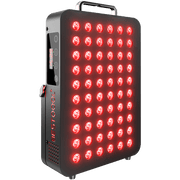









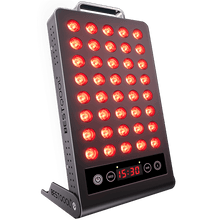
 Small
Small
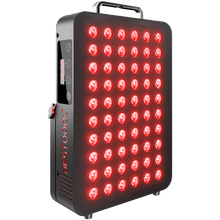
 Moderate
Moderate
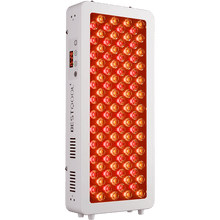
 Moderate
Moderate
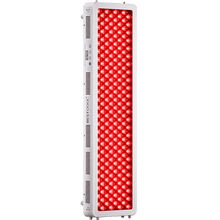
 Moderate
Moderate
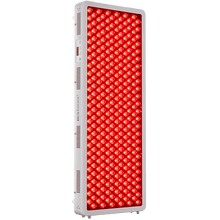
 Full
Full



